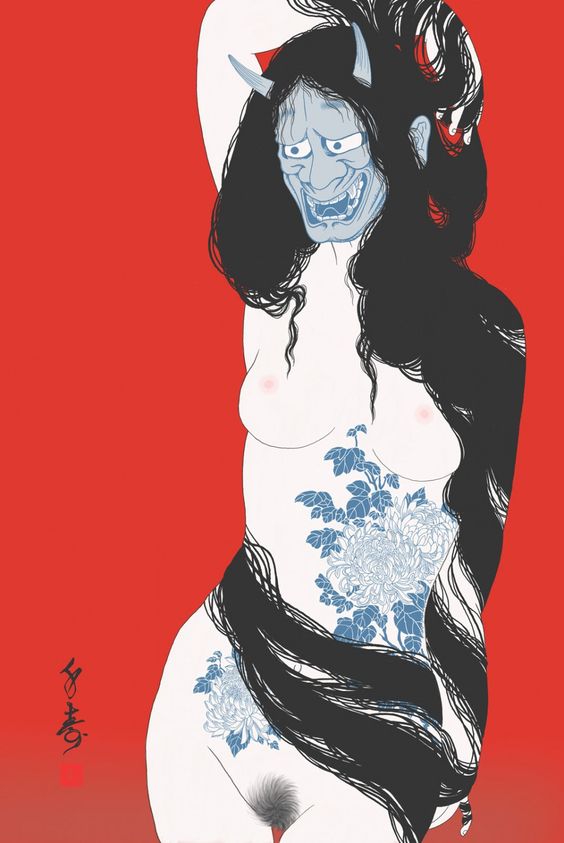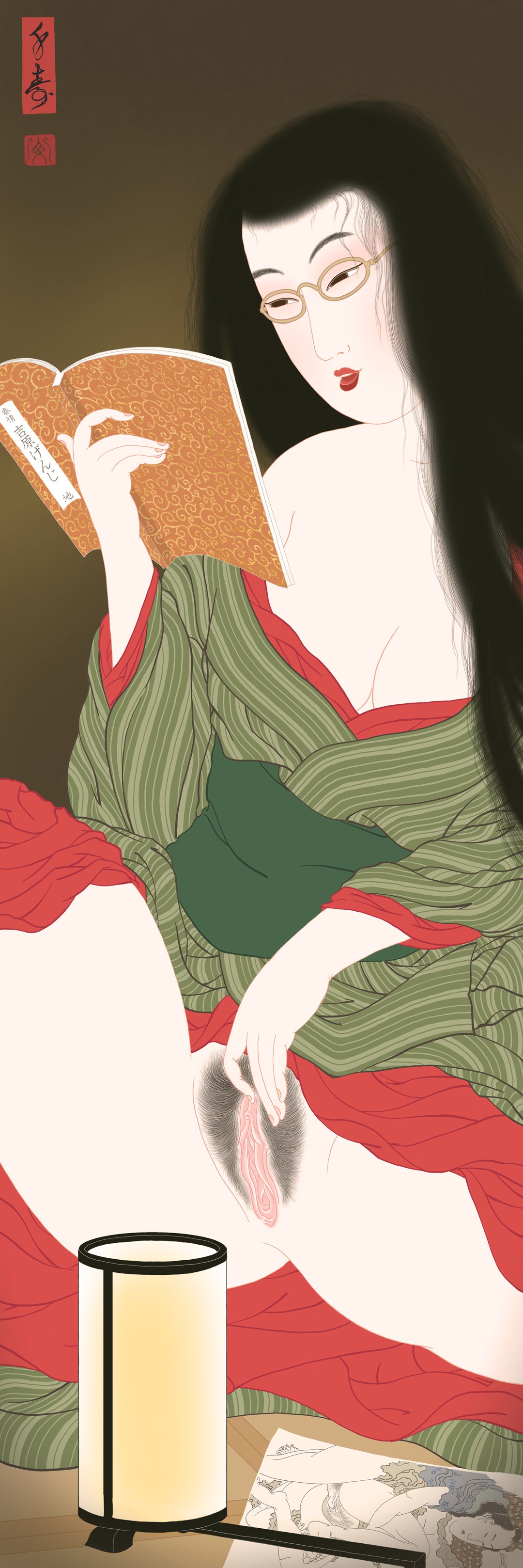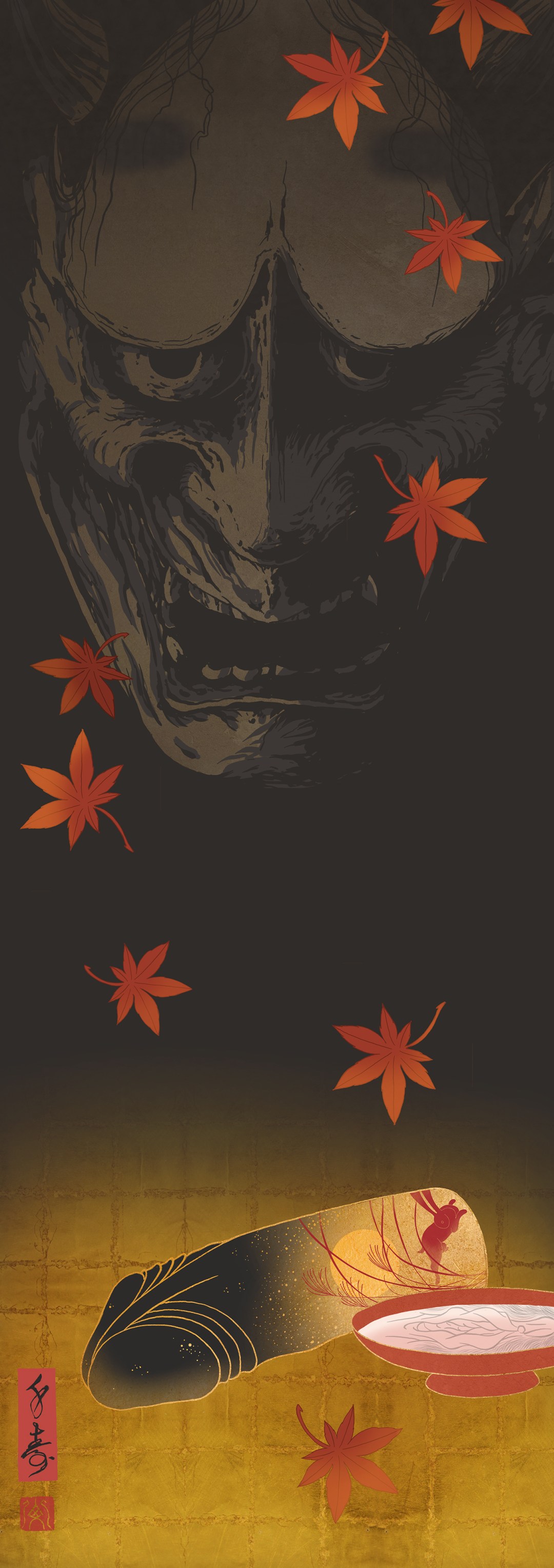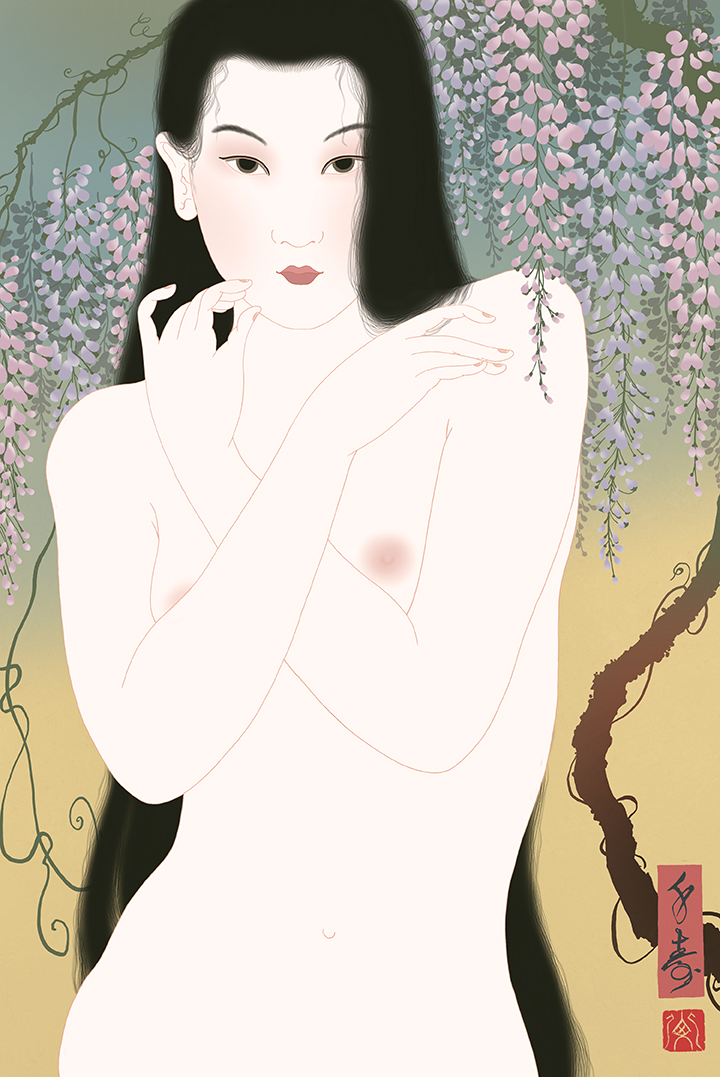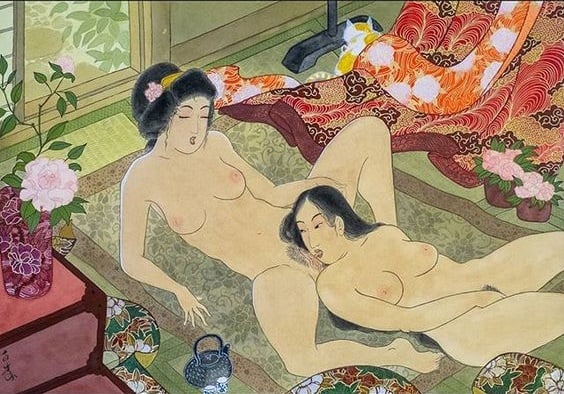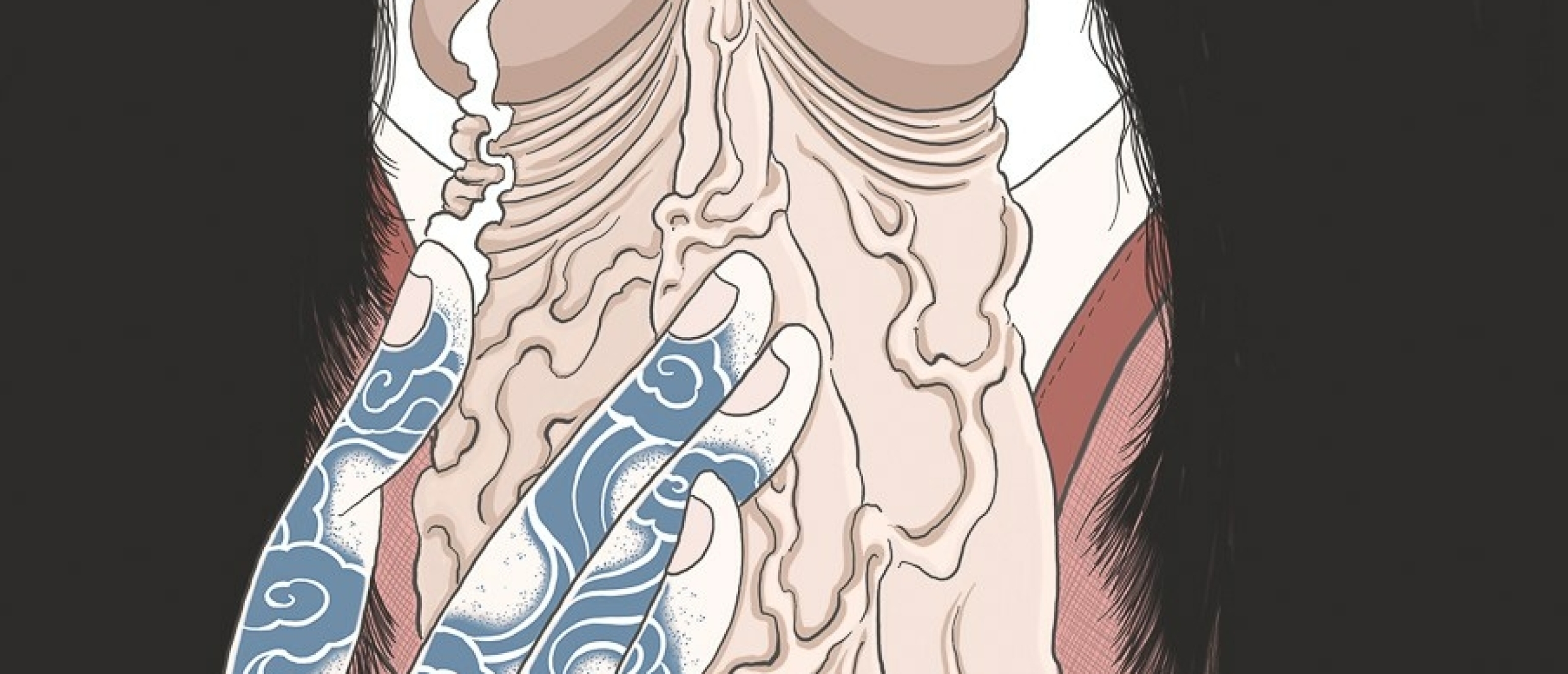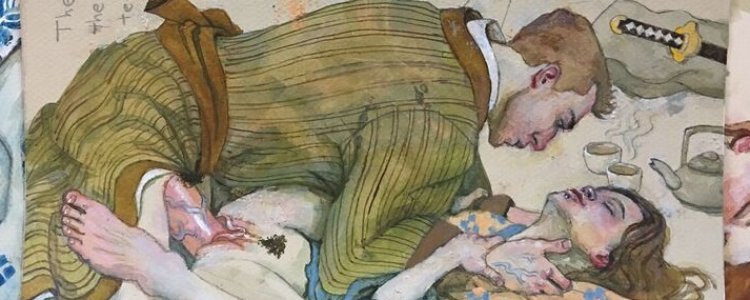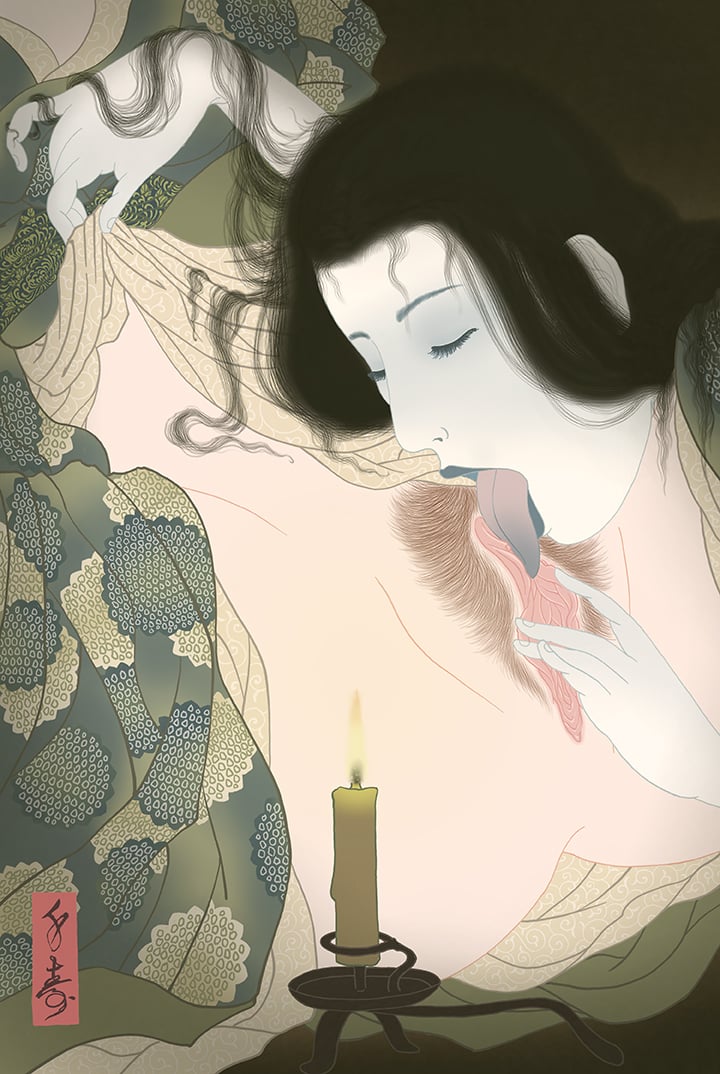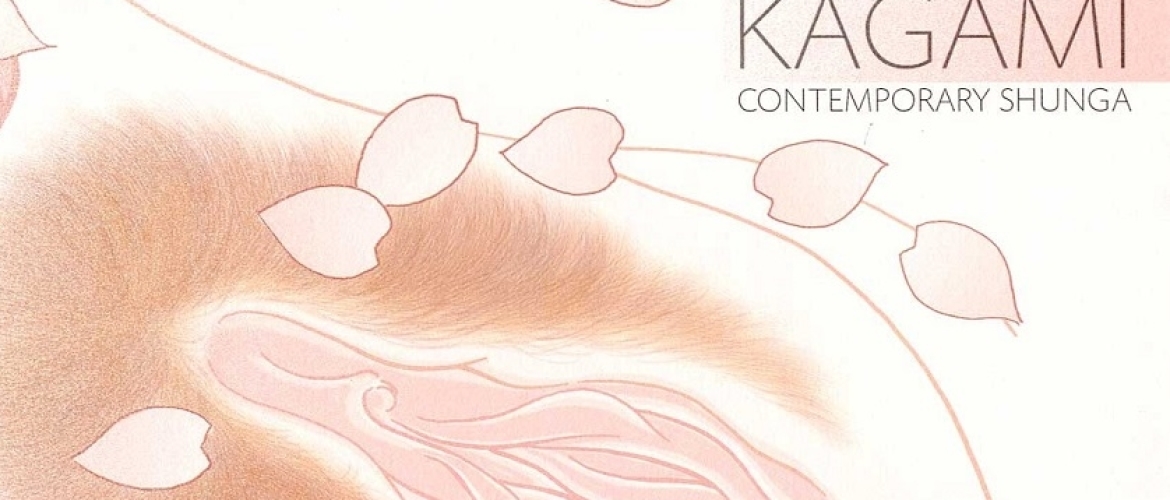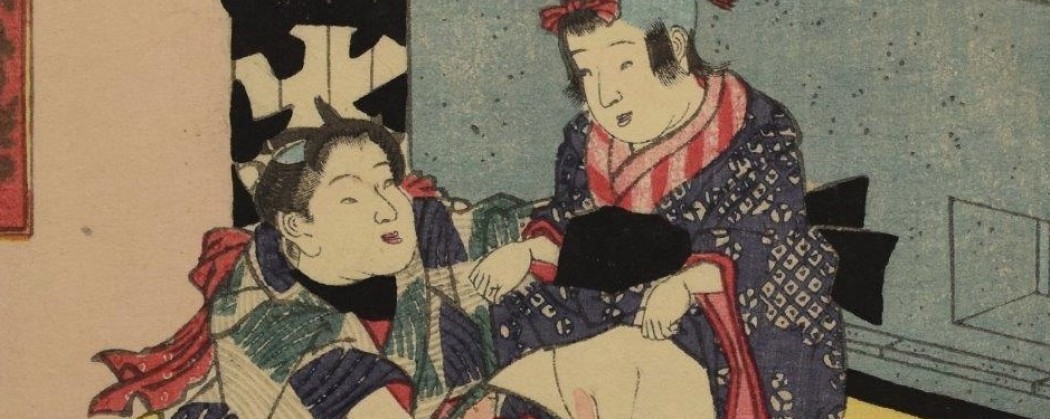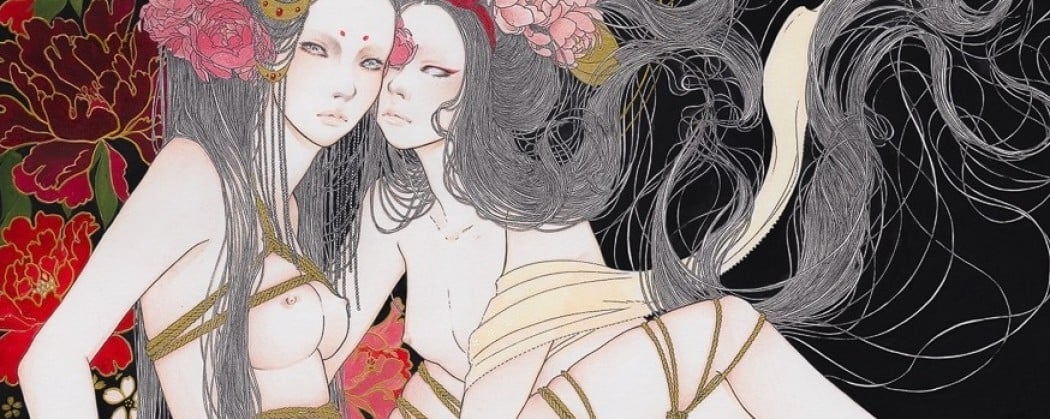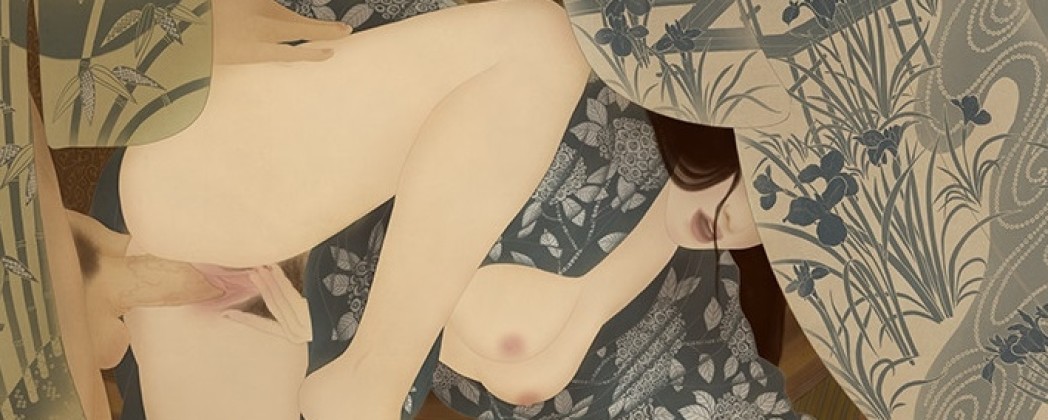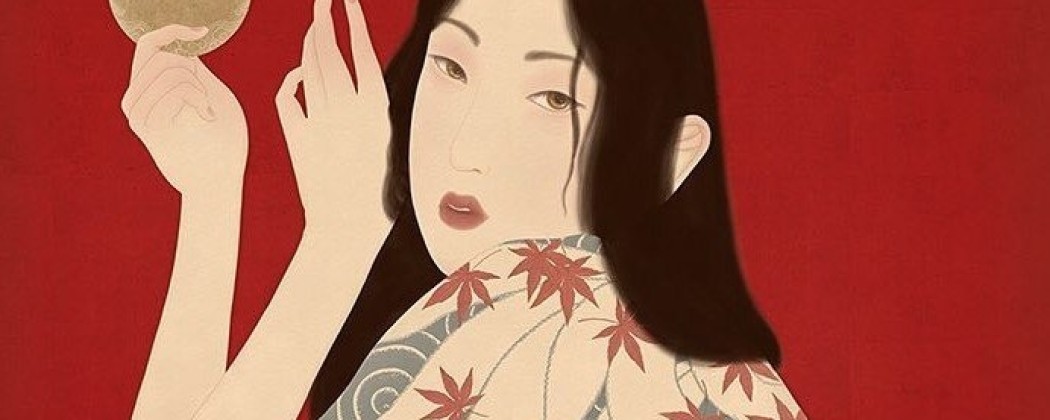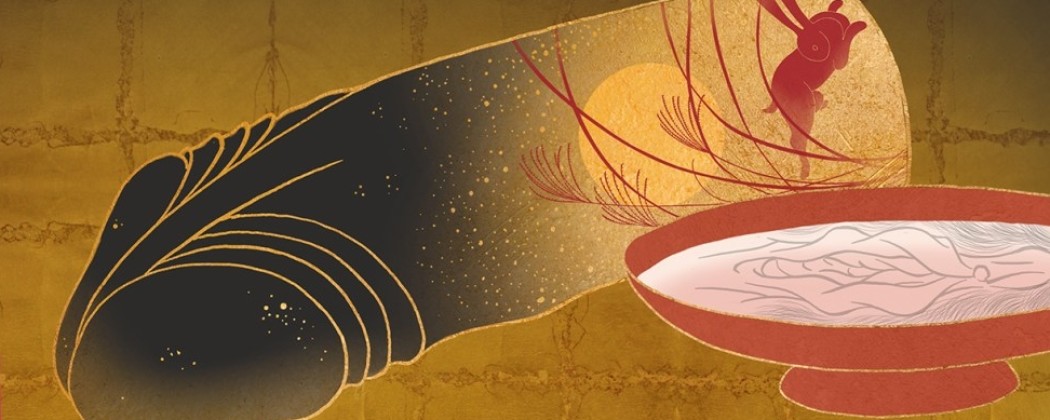
Of all contemporary artists who are influenced by the art of shunga, there is no one who dedicates himself so completely to this art form as the Swedish print designer/ painter Matti Senju Horimatsu (1968). This former tattoo artist reduced his activities in irezumi (traditional Japanese tattooing) and concentrated more and more on his paintings, prints and books dedicated to shunga.
The interview includes some great stories about his upbringing and his mysterious encounter with a ghost but also displays his deep understanding of Japanese culture and shunga.
1) In the bio on your blog you chose to talk about yourself in the third person. Why did you choose this form?
Yes, this is somewhat strange I guess. I really can’t remember why I chose to do that… It is perhaps difficult to write your own biography from the inside looking out. I think I wanted to approach it from the outside looking in. I never got around to completing that bio now that we talk about it. It’s the curse of the artist it seems, that so many things one “should” do suffers from the drive to create. A creative surge can go on for months and during this time I seem to ignore my “should have’s”. This is something that has constantly put me at odds with “real” world most of my adult life.
It’s easy for me to choose between creating and for example doing taxes or paperwork, and the obvious choice is to paint , write, read, talk or something similar. Perhaps the fact that i really understand the fragility of life, that i can die at any moment and that I cannot control that at all. This truth helps me make the correct choices, from my point of view.
There is no telling when inspiration and vision arises and I’ll be damned if I am going to miss out on creative opportunities when they show themselves to me. After I am gone from this world I hope to leave something behind that matters to the persons coming after. I choose painting before “should have’s”. An awful lot of people are afraid of doing this. Perhaps they really want to create something but they think that they have to be a “good” member of contemporary society and so they suffocate their creative drives and visions, always thinking they are not allowed to, or that they are going to do it just after they finished this or that first. A lost minute will never return to you. It’s forever lost. Also, there are not a whole lot of museums showing really well calculated income tax returns that were sent in on time. There are very few books written on the subject of art about people that didn’t follow their hearts, never created anything and lived perfectly ordered lives.
2) Are there other art mediums besides tattooing and painting that you are drawn to?
Tattooing is steadily becoming a medium of the my past. i have exhausted most avenues I wanted to explore and found that as an artistic medium it does not provide me with the freedom I need for artistic growth. Painting, on the other hand, seems to me an infinite pursuit. Because there are so many variations in the tools, canvases, paper, brushes, pigments etc. Change one parameter and you are treading new unexplored ground within a few seconds. It is an endless parade of birth and death. As soon as you master something fairly well, and you introduce a new variable., you are like a baby that is trying to walk… It goes on forever.
I also really, really enjoy writing. If I had the time I would write thick books about important things and matters of the heart. Maybe that is my next step. However, this lies many years into an uncertain future.
I love to design books, and together with my wife I run a small book publishing company. A well designed book can be an artwork in itself. And if you, like we do, create books about other people’s art, it is really to make an artwork in order to present other artworks.
And then we of course have sculpture. I have found that it is just like painting in a way when I sculpt in clay. Instead of a brush you use your whole body to shape something that was without purposeful form into something that comes your imagination. This is true magic. Like some sort of a god I shove, knead and shape water and soil, mud really, into becoming whatever I desire.
3) What’s your earliest memory of coming into contact with art and realising it evoked something?
Very early art memories are the golden death mask of Tuthankamon, my alcoholic uncle’s Toulouse Lautrec poster and of course my grandfather painting in the kitchen. He was one of those fabulous artists that could have been anything but thought he had to work at the post office. So he painted on his spare time. Wonderful oils, mostly, as I remember images of pine trees and landscapes. I still remember the smell of the paint and scent of tobacco from his pipe. he died when I was very little. Later, when I was perhaps 9 years old, my mom let me use some of hie left behind art materials. I didn’t know what to do with the oils so everything ended up a big mess. But it was fun! I think I was early on attracted to impressionism and Art Nouveau, and since those styles are heavily influenced by Japanese art it all makes sense somehow.
4) What attracted you the most about shunga? Its aesthetics or its “message”? Or both? And why?
Since Ukiyo-e had long been a part of my life the aesthetics were already a heavy influence on everything I did. The primary idea of creating shunga was, for me, the fact that I felt that pornography was getting increasingly bad, violent and ugly and was doing so at neck breaking speed. My children were getting older and it was just a matter of time before they would stumble around on the internet and find this ugliness. The idea was that sexuality, true human sexuality, had gotten lost somehow. the heart was no longer present. Sex had become separated from love and/or attraction between spirits and minds. Instead it had become a consumerist, addictive grinding together of genitals. I used to consume pornography myself, and I still sometimes do, but the misogynistic, gender unequal and macho violent mess that is nowadays ( with a few good exceptions) shoved down peoples throats poorly disguised as “sex”. I was fearing that my kids, both sons and daughter, would grow up with all the wrong ideas about love, sex and intimacy, and that I had to do something about it.
Also, the rebel in me could not accept that the people creating this crap would get away with it, so I decided to paint . I studied the history of shunga, and the social and historical context within Japanese society that served as the backdrop and foundation for this phenomena. It’s really much more complicated, unexpected and special than most people realize when seeing the pornographic images of the Edo period. To us they might seem like “erotica” but they were in fact raw pornography mainly created for assisting male masturbation in a time and place where there was a huge difference between men and women in the mega city of Edo. The thing that struck me the most was that man and women seemed equally portrayed and that there was very little of the western macho ideal in the scenes depicted. There were a lot of husband and wife scenes, many scenes of sweetness, humor and so on. There was no homophobia and very little sexual dominance. And most important of all – it’s without shame!
Of course this is generally speaking. There were exceptions, especially in the later half of the 1800’s, where rape scenes and violence occurred, but at this time the great days of Shunga was pretty much over. After the opening up to the west Japanese society found it self left with uncertainty and a change of cultural that was making people feel very uncertain and unsafe. Old ideas and values was being replaced with new imported ones and very quickly so. Usually in such a emotional climate humans are not showing their best sides. Things get tainted by unease and fear. Pretty much like it is all around us right now.
So I decided to use shunga as a vehicle with which I could speak about the true human heart, about intimacy and love. I wanted to question things, belief systems, prejudice and such. I also wanted to not hold anything back and create exactly what I felt like. Sometimes this means really explicit and pornographic scenes and at other times there is a softer more sensual tone to what I do. I want to paint it all. because it is most natural, most human like that. As soon as you start censoring sexuality, making somethings taboo and sinful , perhaps because of really outdated religious beliefs, then you steer the heart into darkness.
So am I creating “real” shunga? I certainly think so. I picked it up back in the early Edo period then traveled all the way here with it, letting it evolve into what I do know. It is now 2018 so of course the shunga cannot be exactly the same as back in 1818. That would just be stupid. If one wants to create shunga one must know and understand Japanese culture and history, but one must also let go of our western culture that is based in the monotheistic religions like Christianity. Maybe that’s is what makes my art special to many people. Not only am I pretty good at drawing cocks and pussies, I am also a zen Buddhist, a married man, a father of three that has read hundreds and hundreds of books on the topics and subject matters I borrow for my art. I have been to Japan thirteen times and spent a lot of time with people there that have taught me many useful things and shared so many wonderful insights and ideas with me. I also like to drink beer and listen to Jazz. And if my art end up assisting men and women when masturbating I couldn’t be happier!
5) Are there specific shunga or ukiyo-e images that are among your favorites? Who is your favorite shunga artist(s)? If I am correct Utamaro was an important influence on your first five paintings?
I specifically like Hokusai’s shunga. He seemed to penetrate deeper (pun intended) emotionally than most other shunga artist. It’s the little details. Expressions in eyebrows and mouths, toes that curl when orgasm is close, and a general sense of intimacy. I study him a lot. Utamaro is my other great favorite, along with Torii Kiyonaga. They were all great at creating shunga. Their subjects are relaxed and always intimate. Always close to each other. I also love Meiji period artists like Kajita Hanko and Eizo Hirezaki. It’s all very elegant and romantic.
6) Your work is Asian oriented but who are your favorite Western artists, ancient and contemporary?
My favourite western artists are Vincent van Gogh, Alphonse Mucha, Carl Larsson, Gustav Klimt, Hilma af Klint, Claude Monet, Toulouse Lautrec, Simon Bisley, Karin Larsson, Anders Zorn, Caravaggio, Tamara Lempicka, Georgia O’Keeffe, Frida Kahlo, John Williams Waterhouse, Dante Gabriel Rosesetti, August Strindberg, John Everett Millais, James Tissot, John Bauer, Jeff Faerber, Maryam Gohar and Sigrid Hjertén.
I could probably go on for a very long time, but if you look at all these artists you will likely discover a thin red thread running through all their works. Without people like this I wouldn’t know what to do with myself.
Click HERE for the second part of the interview…!!!
More modern shunga art..!!!

